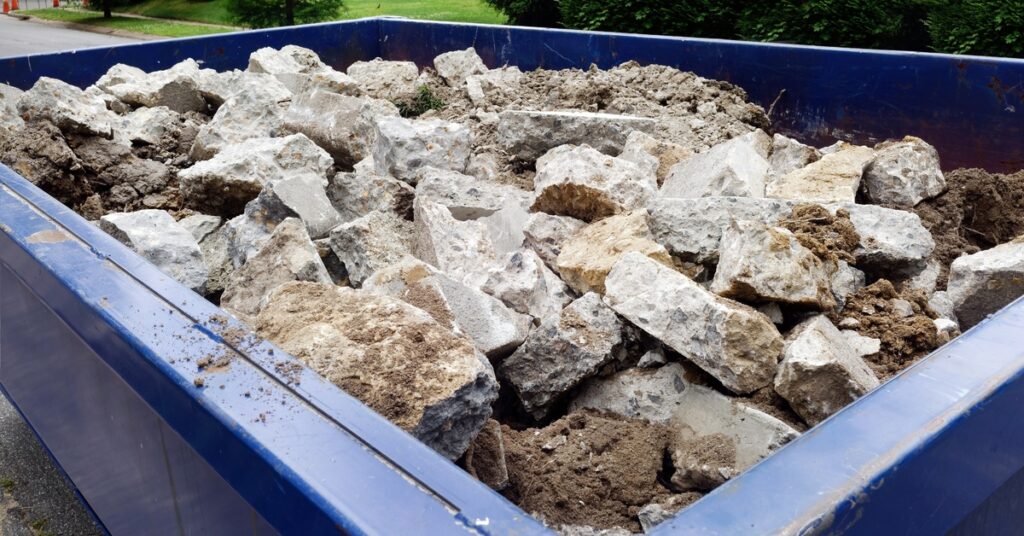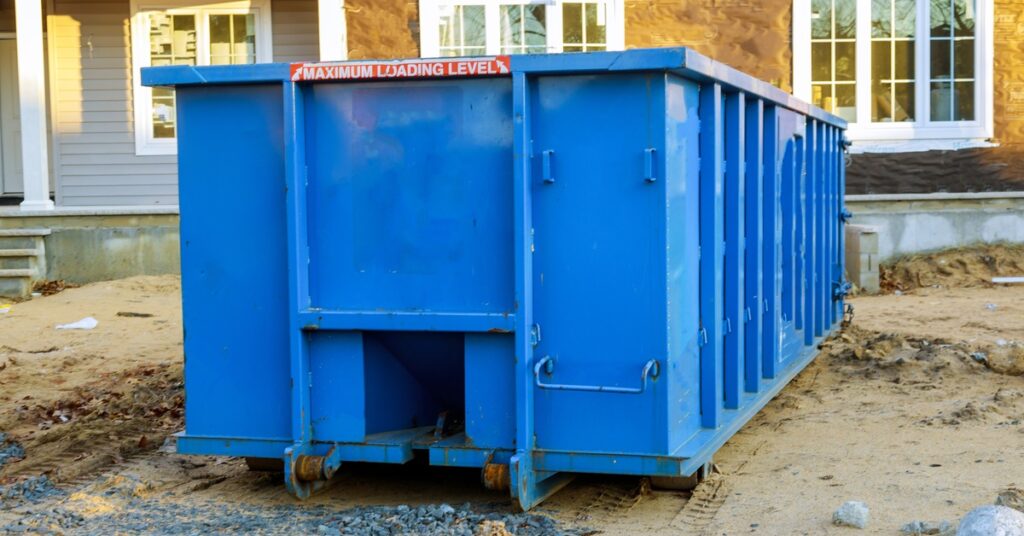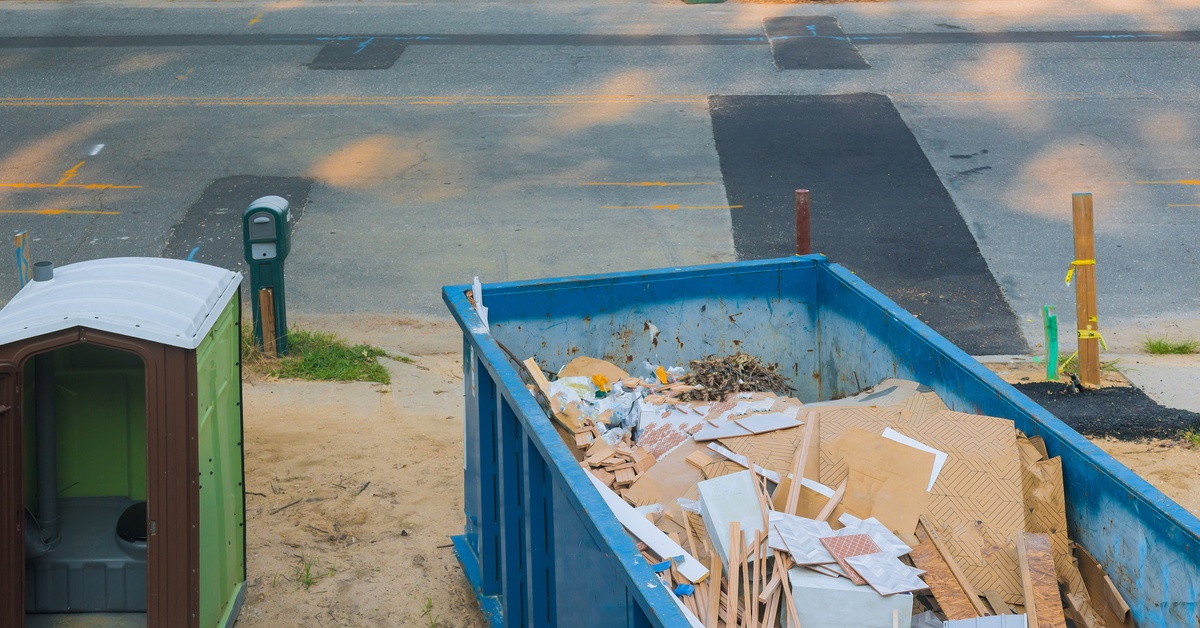When it comes to roll-off dumpster rentals, one thing is certain: every square inch of space matters. Smart packing techniques can help you fit a lot of waste into your container while staying within weight limits.
To help you make the most of your dumpster rental, we’ve put together some tips for maximizing space in any dumpster. By following these strategies for loading and organizing your waste, you’ll avoid the frustration of running out of space before your project is complete.
1. Understand What Dumpster Size You Need
Choosing the right dumpster size sets the foundation for maximizing your space efficiently. Most rental companies offer containers from 10 to 40 cubic yards, and each size serves different types of projects. A 10-yard dumpster works well for small- to medium-sized cleanouts or minor renovations, while 30 or 40-yard containers handle major construction debris or whole-house cleanouts.
Consider both the volume and weight of your waste when selecting a size. Heavy materials, such as concrete, dirt, or roofing shingles, require larger containers for relatively small volumes because they reach weight limits quickly.

2. Break Down Large, Bulky Objects
Large items take up excessive space when thrown in whole, leaving gaps that smaller items could fill. Furniture, appliances, and construction materials can break down into manageable pieces that stack efficiently. For example, remove legs from tables and chairs, take apart bed frames, and separate shelving units into individual boards.
If you plan to dispose of large cardboard boxes in your dumpster rental, break them down to create flat surfaces and eliminate wasted air space. Taking apart bulky objects makes items safer to handle and reduces the risk of damage to your dumpster.
3. Load the Heaviest Items First
When your dumpster arrives, heavy materials, furniture, or appliances form the best foundation for your roll-off dumpster rental. Start with the largest heavy pieces and work your way down to smaller, lighter objects and trash bags.
Place concrete chunks, dirt, heavy lumber, or appliances at the bottom of your container first. This creates a stable base that allows heavy objects to be compacted at the bottom, preventing injuries while loading. Distribute the bottom layer of your dumpster before stacking objects on top.
4. Flatten Items First
While it may be tempting to throw materials in your dumpster haphazardly to save time, this will waste valuable space in the container. Positioning items flat against the bottom and sides of your dumpster eliminates air pockets and maximizes usable space. Lay plywood, drywall, doors, and other flat materials horizontally rather than standing them upright.
This technique creates level surfaces for stacking additional items and prevents materials from shifting during transport. Plus, the dumpster rental company will appreciate the way you loaded up the container.
5. Distribute Weight Evenly
Even weight distribution prevents your dumpster from becoming unbalanced during transport. Spread heavy materials throughout the container rather than concentrating them in one area. This approach also prevents the bottom of the dumpster from sagging or sustaining damage under concentrated weight. It also helps materials settle more naturally as you add to the container.
Mix heavy and light materials throughout your load rather than placing all dense items on one side. Check the weight distribution periodically as you load your container. If one side appears significantly heavier than the other, redistribute some materials to improve balance.
6. Bag Small Items Together
A dumpster full of irregularly shaped objects likely has space for smaller items to fit, even when broken down. Maximize this free space by bagging up loose debris to fill irregular spaces between larger items. Heavy-duty trash bags are ideal for handling the weight and sharp edges of construction debris.
When you bag loose or small items together, they stack more efficiently to utilize vertical space in your dumpster for rent and are easy to compact. Bagged materials also make the final cleanup easier and prevent small debris from scattering during transport.
7. Identify and Fill Gaps
Look for empty spaces between large items and fill them with appropriately sized materials. Small boards, bags of debris, or broken-down boxes can fill gaps that would otherwise go unused. This process requires patience but makes room for more waste in your container.
Walk around your dumpster periodically to spot unfilled areas from different angles. Sometimes, gaps that aren’t visible from one side become obvious when viewed from another position. Rearrange items if necessary to create better-fitting combinations that eliminate wasted space.
8. Compact Each Stacked Layer
Gently compacting each layer as you build upward creates more room for additional materials. Step carefully on soft items, such as cardboard, insulation, or bagged debris, to compress them before adding the next layer. This technique works especially well with materials that contain a lot of air space.
Avoid stepping on materials that might puncture or break under pressure. For items that pose this safety risk, use a rake or shovel to level and compress materials rather than relying solely on foot pressure. The goal is to eliminate air pockets and settle materials into stable positions for continued stacking.
9. Avoid Overfilling the Dumpster
Overfilled dumpsters create safety hazards and may result in additional fees from the rental company. Materials that extend above the container’s edges can fall out during pickup and create road hazards or property damage. Most companies will refuse to pick up containers with loads that extend above the rim for the sake of safety and legal transportation.
A good rule of thumb is to stop adding materials when you reach about 90 percent of the dumpster’s height capacity. This buffer zone accounts for settling and prevents accidental overfilling as you complete your project.

Plan Ahead for Your Next Dumpster Rental
Maximizing your dumpster space requires planning and attention to detail, but the effort pays off in financial savings and a hassle-free cleanup or renovation. Take time to plan your loading approach, gather the right tools for breaking down and compacting materials, and prioritize safety throughout the process. With these space-maximizing techniques, you’ll get the most value from your dumpster rental and complete your project successfully.
Ready to get started? Contact CR Dumpstars for hassle-free dumpster rentals in the Albany, NY, area and streamline your upcoming cleanup projects.


Leave a Reply